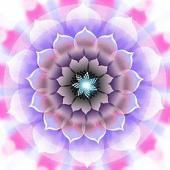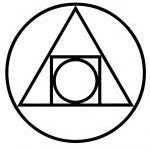Search the Community
Showing results for 'Awakened'.
Found 4,582 results
-

Ether replied to Natasha's topic in Spirituality, Consciousness, Awakening, Mysticism, Meditation, God
@Rilles Then the Awakened one came and posted one of his songs... -

Guest replied to WildeChilde's topic in Spirituality, Consciousness, Awakening, Mysticism, Meditation, God
Jesus is an allegory of Enlightenment, his miracles and doings are an art mirror of the inner awakened self. Same as Gautama Siddhartha or Mahomed. -

Saumaya replied to Sempiternity's topic in Spirituality, Consciousness, Awakening, Mysticism, Meditation, God
Even a truly an enlightened person will say he is enlightened to teach. I dont know why people use the word claiming, it only shows they are not enlightened themselves. As if you need every guy in the street to shout that you are enlightened to confirm it. You can definitely. If you are somewhat on the correct path and have a sharp eye. @Jed Vassallo A teacher can only course correct you sometimes but in the end, all work has to be done by you. A physical teacher is necessary if you are learning a subject, but in enlightenment, you are unlearning what is untrue. Id say stick to reading books by awakened people(hint : Jed Mckenna) and do what they tell you to do. If you are still not satisfied, go to spiritual gathering(preferably non dual) and ask around for teachers. -

Guest replied to Sempiternity's topic in Spirituality, Consciousness, Awakening, Mysticism, Meditation, God
EGO the survival blueprint of the body is something that consolidates with awakening. Egoistic, the definition of egocentric behavior and the phycology definition has nothing to do with the EGO. They are 2 different things. Transcending the EGO does not necessarily mean in practice letting go of being selfish. In fact, as you state above, more awakened, more selfish, is true but is a different selfishness than a dormant human being that searches for closure. The true selfishness that leads to destruction is not sharing your own harmony of the body/mind. Being selfish per example because I have more material things than my neighbor has nothing to do with EGO. -
Basically, Don Edward Beck & Christopher C. Cowan took a very nice approach of making a category out of Spirituality and the levels of reality and separate them. The awakened human beings integrate all of them, all the colors, all the levels. But they did it for Marketing purposes and the Financial System.
-
Hey this one was from a while back. 10 mins: At this point I was having visuals everywhere that looked almost like the astral realm. After this I started to feel like I was realising something... That we as people need to beat to the sound of our own drum. In this experience it was my personal will I was experiencing and it's influence of only the good and its contagiousness in the mental experience of the people I was interacting with. Then onwards it got interesting. I won't give you the details of how I got this knowledge, but I did, and it was regarding the nature of reality. I discovered that reality was all made of one vibration vibrating in different scales overlapping each other, but the keytone to it all was one and single and one for all, it travelled through all of them, and I who was travelling through, still, in the now, but in eternal power, which could penetrate and permeate anything I wished in the sense of the power of consciousness over evil or manipulation, it was an ecstasy but a fearful extasy, one which felt like gave me a greater responsibility one which I almost felt I couldn't handle all on my own. Then I thought I was Jesus, a Jesus of the modern world, a Jesus who is in the era of Marylin Monroe, as I saw the paintings of her pasted everywhere on the ground, and I was there in Grace. Strange thing was I was Jesus at that time, I was his Consciousness, Christ Consciousness, I could feel the responsibility and the burden of that, of carrying such things, such a great weight of relentless penetrating power into anything and everything to the deepest and densest seed of evil, because this vibration could see through anything and everything, which were all only offtones of this one great reality in one of two directions, up or down, doesn't matter still duality. I sat there vibrating my fingers in time with this tune of life and I saw it bouncing off everyone and reverberating everywhere, and I was the life maker, the tune itself, with no other added aggregates, pure clean, washed through like a song that cheese grates the separate parts out of you until you are standing in the middle, right in the middle. No side step or crutch anywhere, pure presence at a single point, zero, and infinite, but wholly present, I am shaking right now as I speak (its cold here). And I feel it now in my shivers it is pure life force, energy in your body but in reality as well, and it is communication itself, intelligent already, it knows how to think, even though it's in the same place all the time, with it's eyes wide open, in every single cell of the body, beating to that one frequency. Then visuals: Saw a look alike of this Alex Grey painting embodied in the room and part of my subconscious. SEE BELOW The similarity was striking Then started seeing over my vision a kind of HYPERSPACE where there were these 4d cube like figures overlapping and intertwining each other like a fabric of some sort, like a nicely knitted weave that was interactive dynamic and 'tricky'. It was illusory and overall it was like one shape in one place but many places also which you are looking at and part of in some way. In the background I could hear a mantra going at exactly the same frequency as the vibration of life I had discovered earlier, which I now was feeling in my whole body and being. This mantra was like a low pitched almost throat singing like buzz, like a bee even, which was supporting all life and keeping the physical reality in 'action', which I was supporting as well with my being and body as an Antenna. There was one more thing I felt, which was that other people have this other self or vibration in them that most of the time they are not connected to on the inside out and when they look at me I can feel it in some way and I don't know how to explain how other than pure mathematics in their relation to GOD which was dynamic and alive and looking at me as I was it. and where other people are at in relation to this presence is related to one whole symphony of many artists some good and some and bad, some closer and some further to the middle of this three dimensional bell curve. I knew where they were relative to this vibration, that beyond them represents their higher self. I realised that there are the good vibes and the bad vibes and the good vibes keep us alive and the bad vibes kill us and give us cancer whoever and wherever they are in our bodies or our minds as we are beings who need to readapt to the mathematics of the physical world in our energy system in time with natures changes and challenges that come with greater personal freedom of the modern day, the bad vibes and persons owned by them don't know consciousness is here and we have generally a greater consciousness on a deeper level which has been now not so good in our attempt to create space on the planet as a high stake for life itself. Us living in nature at these growing endless dilemmas between people and memes placed in the minds of our population. They (the controllers of consciousness from ego) are using us and leaving us slowly with their ways of manipulation and spoiling our code frequencies and order in the harmony of the universe and seeing the mathematics of it all makes it a black or white process in the network (so we ask who are we in order to reset the code to ZERO) in order to bring form adaptably and strategically back to the one unchanging I (with persistence) and align the body (this makes it 1 after the uncertainty of zero (but a Fibonacci one which is infinite and goes in both directions making a toroid). This is balanced until many egos (phantoms as entities in the matrix (hollow)) come in and try to claim the whole for their own purposes. It is freed when counterbalanced or embodied (which is more effective) then you are balanced and need no crutches and you can propagate the code at incredible rates but it can challenge the world. Karma in other words, and what you see before me is my patterns overlapping in me trying to regress to a place previous to fear in the mathematics of intention inside permanent stillness and mental empty on edges posture. That is when thought goes out of array there is a crease in your neuro linguistic programming of your muscle neurolanguage (my word, I think) of subconscious game (physics or something like that) is damaged or bugged due to separate identities. And you slip away slowly or quickly depending on the situation and how far off the mark of this you were. One is too scary though. Why? I don't know. Ridiculous to say this, I know, but being the one must be kind of scary. It's as if you are playing a videogame and both a part of your controller and character are melting together as if something is leaching off them both and destroying potential for proper language, clean language that is properly programmed for the population of the brain. But that is a lie, it is something moving through you like a comb combing through you, taking the patterns and uncreasing the sheet of the white matter of your brain, I felt this physically during the trip, and it's incredible for you and others to be opened as Knowledge enters resonates. Remember inhabit their minds as well and clean up all the garbage. Of course this is one intelligence. I thought I wanted to lead humanity against the bad guys, the nuclear guys or just aliens or bad vibes in general, and if they are of an artificial toxic frequency of decay and death Kali Yuga style. I was the eye of peace in a troubled world, and I felt energy and the essence of life itself coursing through my body healing all my pain and illness and mental anguish and hatred and lack of compassion and lack of vision and knowledge of Self. I had shifted to the inside and I felt like a throne in myself. I couldn't help but sit on a chair with energy wide open giving rhythm to everyone through frequency. Without moving, and looking at others, just there clearly with eyes wide open, seeing into their soul. I wasn't concerned with other memes besides myself in my deeper experience and other people's relationship with this self as a single I that was permanent ever unchanging for everyone but also ever mirroring (not replicating) and receiving itself through others in harmony and relationship in a good way as the mathematics of Fibonacci coming to ZERO on both sides of the coin to the middle, both in frequency and in feeling and structure as it spread through my body realigning it all, I felt like this vibration through me could bring alive a bird from the dead, almost. If I felt like it maybe, but I didn't of course, because I was Jesus in my own way, and I was able to do no miracles evidently, I guess, other than for humanity to be healed and to come back to that one single vibration that matters the most to all of us, it was enough to concern myself with at that moment, deep within the mind that was awakened, and it was the I who held it alive and alit as a flame in the world for others to keep alive in the future. It was wicked and so powerful and it was hard to stop at that point without changing my course permanently which I couldn't do at the time for others (because too much responsibility to hold truth). I needed time to settle in the fact I wasn't Jesus but a truth still remained from that and it is still available to me now. Like in a certain sense I feel right now that every pain in my body is still an excuse and a justification for me to just let some of those bad toxic frequencies of dissonance leech into my being like an offtime song in my song. Or could be my song is literally being chopped apart by something or someone due to fear to see mySelf in the unveiled nature of my own being. I embodied, WHO I REALLY AM. For others to see me like that, due to my eyes being covered by something else. But then in the end it was I who needed the courage to see myself clearly and I had to push through most of the bad vibes due to my bad physical health. This was interesting and very weird in a non-verbal language and proprioception sense of re-aligning. I NOW AM TRYING TO REALLIGN MYSELF WITH THIS.
-
My first experience of Truth was on a high dose of psilocybin mushrooms. I had never even heard of any concepts of enlightenment at the time. I left my body and went to a place where everything was one. No sense of Self. There was no life or death. I felt that if I didn't go back, which would be body death, it wouldn't matter. Everything made sense, I knew everything. It was bliss on a higher level I thought possible. That night I continued to leave my body at will and go that place, sometimes for hours. Then I did ayahuasca. Again I went to that place of infinite everything, yet nothing. I easily go to that place, no effort. But shortly after I come back, there's a sadness that it's only temporary. And my life goes on unchanged. Why do some people get permanently Awakened after experiencing Truth and others do not? What can I do next time I go there, or shortly after I come back, to become fully Awakened?
-
DoubleYou replied to Preetom's topic in Spirituality, Consciousness, Awakening, Mysticism, Meditation, God
That video straight up awakened something in me. It perfectly put to words what Ive been discovering lately. I agree, its one of his best, and I hope people will understand and see the message. Its such a beautiful thing to witness / tap into. At the end of the video, Leo perfectly describes how an artist sees the world. It was spot on. The artist's biggest frustration is the fact that he has to translate that which he sees. Why are some artists depressed all the time? Its because while they are able to tap into infinite intelligence, they are unable to manifest it into a piece of art... yet. Why, for some people, their work/art is never good enough? For that very reason. They've seen the unlimited possibility, and now it becomes their life's work / life purpose to manifest infinite intelligence into this world. As a God would. And we're all creators. We all share that same life purpose. To manifest a part of the unspeakable into something tangible, so that it can be enjoyed. Praised even. -

Ether replied to Ether's topic in Spirituality, Consciousness, Awakening, Mysticism, Meditation, God
I never said I awakened, more assumptions, you sounding like @Torkys -

Ether replied to Ananta's topic in Spirituality, Consciousness, Awakening, Mysticism, Meditation, God
How is living life awakened? Tell me about emotions. -

Ether replied to Ananta's topic in Spirituality, Consciousness, Awakening, Mysticism, Meditation, God
If you have awakened then why do u still read those books? -

furashido replied to WaterfallMachine's topic in Spirituality, Consciousness, Awakening, Mysticism, Meditation, God
@WaterfallMachine When you are shown the true nature of God / Infinity / the absolute and have become it. If you have, you know when others have as well. But it is not the final step. Also, just as it's something one could attain, it is something one can loose if one isn't humbled. There are those who are awakened but go astray afterwards and loose it all. -

Guest replied to WaterfallMachine's topic in Spirituality, Consciousness, Awakening, Mysticism, Meditation, God
Let me drop another bomb Any real awakened human being can sing professionally Because the harmony of the chakras will make you want automatically sing of joy. -

Guest replied to Saumaya's topic in Spirituality, Consciousness, Awakening, Mysticism, Meditation, God
Consciousness does not change, is the Nothing. The Awareness of each human being varies depending on the inner training. Because Enlightenment is infinite, an infinite expansion of the human being as a whole and its awareness. This is the reason one can only claim: "I have awakened (Buddha said), now is an infinite discovery" -

pluto replied to WildeChilde's topic in Spirituality, Consciousness, Awakening, Mysticism, Meditation, God
There's nothing like watching your favorite childhood shows again as an adult with an awakened perspective. You'll be blown away but you'll also see the that the seeds planted within you from those childhood shows have sprouted to who you have become. You were always living a spiritual path, you just didn't know it. -
A special journey entry I wanted to share, that builds upon itself as you read it, leading back to the importance of being in our hearts for spiritual growth and expansion on all levels, and in all dimensions. I hope this answers every question you have remaining about life I read this post by Lincoln Gergar a few minutes ago: *** QUESTION & ANSWER *** QUESTION: In Ramana books Be As You Are https://amzn.to/2uhweiQ (page 211) he says, “One suffers because of the idea that the body, which is never oneself, is I; suffering is all due to this delusion”. Going to the spiritual heart kind of feels like identifying with the body. What are you thoughts on this? MY ANSWER: You can find quotes by Ramana Maharshi about the Spiritual Heart (Hridaya) and it's location. He has been quoted as saying that the Spiritual Heart is located at the center (technically just a short distance off center) of the chest, while at the same time being everywhere - because it is a non-physical energy center that has a correlating physical location. By focusing on the location in the body, a person can perceive the Spiritual Heart's energy and thus draw the consciousness away from the physical body and physical dimension. Essentially, the consciousness's primary attachment in the body is in the heart area. By focusing here, the energy of the mind moves from the head to the heart area, and then finally into the Spiritual Heart. Because we start our awakening process already having our consciousness attached to / identified with the physical body, we must work to remove this attachment. My experience is that the person can perform this attachment removal one of 2 ways - focusing on the Spiritual Heart and "surrendering" into it's energy or by residing as the consciousness alone (also requiring the knowing that my true Self is not the body). I hope that my answer has clearly explained this concept and this process. Blessings and Love, ~ Lincoln Gergar This shows undeniably that surrendering to the heart will be my ultimate liberation; sitting with it in constant awareness is what I will do next. I thought about meditating on my heart while bathing in the sun, for when you don't shower like me, you don't get sun burnt, and the sun feels wonderful on my skin. I have booked an appointment with this man in the next few days to talk about my souls purpose because I don't know the first place to start in my life; to travel, or get a job, no clue. Ironically I know that by surrendering to the heart, this purpose will be revealed, so that's another win-win in loves favor. But my excitement has drawn me to Lincoln, and I believe that what he tells me will help me make the big lifestyle choices I want to make. I am in a very stagnant environment in terms of having very little contact with people at home, not many friends, with nothing to particularly do; so I would love some advice here. I know I will get this advice from my own higher self in as little as a few weeks or as long as a few years, so it's all good either way you know. But going back to surrendering to the heart, it is both the simplest and hardest thing I've ever done. To not be attached to my thoughts and emotions and focus relentlessly on the heart area has created many fears such as "How will I live without thoughts?", "Won't this give me permission to cause chaos if I'm not analyzing and judging myself anymore?". These too are just stories, stories that I respect and adore, but stories I must let be and turn my focus towards my heart. It's very challenging when for your whole life you've always been attached to thoughts. It's one of my most hard wired addictions/attachments. But ultimately, these thoughts and emotions too I must be surrender to my heart to become the enlightened master that I've always been. This makes me think (See, so hard wired) that other spiritual practices are all obsolete. But then I saw this from Lincoln: "The foundation of any genuine spiritual teaching system is heart-centered living." This means spirituality is all about awakening the heart, and letting the light in the heart transform everything for you. You don't have to be the one who changes your beliefs, let your heart do it for you. You don't have to find your life purpose, let your heart do it for you, on your behalf. The heart represents your higher self, and that has a much greater perspective than our egoistic minds, so letting it run our lives will set us up for the most bliss, happiness and peace that we always have been, always deserve, and inevitably will embody in this lifetime or another. It's the ultimate test from God in each moment: "Are you focused on your heart?", "Do you meet everything in life with heart-felt embrace?". That's all the higher self asks of you, but for your soul which is below the higher self in terms of integration, it has lessons it wants you to learn, so these two "things" are the same but different. The higher self being an expanded version of the soul. It is so pure that it has no desire. It is us in our most expanded state of awareness. But knowing the soul is all loving, knowing the higher you go the more love there is, knowing the higher self is love, letting my heart be my guide and surrendering into it is as such the most logical, direct and powerful practice to do. It will answer every question, heal every suffering, balance every chakra, unify the mind and the heart, allow your higher self to enter into this reality, and create a life of endless joy, happiness and synchronicity. All that has ever been required is trust in my heart, that focusing there will change my life, will expand my awareness beyond beliefs. Simply trust, and the discipline of focus. All other fears of not knowing what to do I trust my heart will answer for me. And these fears really do seem silly now when I you know that focusing on your heart will lead to infinite happiness, like what i there to fear when this is fact? What exactly am I missing out on by surrendering everything to the heart? Yet however logical I am with this, highly illogical and powerful deeply rooted fears are sure to arise when I least expect. And when they do I will know to keep focusing on my heart. I will know that the reason anything arises is to help you focus on your heart. This life isn't a mistake, everything arises for this purpose, to make us more heart-centered than ever before. God didn't just make anything random, it all has a deep meaning to return to the heart. Your actions aren't restricted as you can be heart-centered no matter what you are doing. That's why there is no right or wrong choice, it dosen't matter what you do, just how much you stay grounded in the heart throughout whatever you do. All excitement tells you is; "Here is an action you can take that will arise the most darkness in you to heal in the shortest amount of time". SO excitement is like the fast pass at Disney land to becoming unconditionally loving. It helps arise all of the unresolved pain in you very quickly to feel in your heart, thus creating fast evolution. But even when not excited there is still unimaginable amounts of pain I've found to feel in each moment, so it's okay if we aren't excited. We aren't missing out, that's just ego. Again, staying in the heart is the foundation of it all, let your heart take exciting actions on your behalf naturally on its own time. Let it happen naturally by first being heart-centered. Even just this one practice is challenging as I've said, so why create more things on your spiritual checklist to do that will only distract you when you keep thinking about them, and when you don't get results emotionally. The heart is the answer. If your awareness is on your heart, you're doing everything perfectly, and you are in the greatest state of oneness you can be in for that moment. There is literally nothing else to do or change. Know that even if it dosen't seem perfect, everything is perfect when heart-centered. It's all God wants. Perhaps your soul wants something more specific, perhaps not, but you couldn't avoid it if you tried when you're in your heart. That's why those who are awakened to a certain degree are also living their souls purpose naturally. No need to force it with our limited minds that will never know it, let the heart do it. Trust in it's love. I'll try my Godly best to be more in my heart. I know deeply that this is what I'm called to do, and this is the answer to every question I'm looking for. I commit even greater to surrendering to it's almighty love that I am already, but unaware of at this vibration I perceive reality at. I surrender to my heart throughout even my deepest fear of death, to the fear of missing out on life, and to the fear of unworthiness of receiving the love in my heart, cause I am that love, and all is that love I speak of behind any appearance. All of my love goes to those on the journey, I know the pain you're in, and I wrote this for all those who are in that deep stage of suffering like me who are searching desperately for a way out of it. The heart is the doorway to heaven you always wanted to find. Peace, and oneness is already here. Thank you for being here to read this. And know that it's okay to feel pain, that's how we evolve the fastest, by diving into the pain head first, and not looking back at the thoughts telling you that there must be another way. And so we are free to relax knowing this, relax knowing you also have infinite lifetimes to master this if you're not ready now. You have so much time to do this, so relax. If you want out of suffering, then slowly integrate focusing in your heart first in meditation then in every moment. Every answer is found there, every desire fulfilled, every thought quietened, and all that's left is an empty infinite vessel of love. Here is the video I watched that talks about trusting the heart in great depth
-
@okulele Thank you, our light will heal everything in us, soon, just growing pains while this happens. Every bit of encouragement is greatly appreciated by me right now I read this post by Lincoln Gergar a few minutes ago: *** QUESTION & ANSWER *** QUESTION: In Ramana books Be As You Are https://amzn.to/2uhweiQ (page 211) he says, “One suffers because of the idea that the body, which is never oneself, is I; suffering is all due to this delusion”. Going to the spiritual heart kind of feels like identifying with the body. What are you thoughts on this? MY ANSWER: You can find quotes by Ramana Maharshi about the Spiritual Heart (Hridaya) and it's location. He has been quoted as saying that the Spiritual Heart is located at the center (technically just a short distance off center) of the chest, while at the same time being everywhere - because it is a non-physical energy center that has a correlating physical location. By focusing on the location in the body, a person can perceive the Spiritual Heart's energy and thus draw the consciousness away from the physical body and physical dimension. Essentially, the consciousness's primary attachment in the body is in the heart area. By focusing here, the energy of the mind moves from the head to the heart area, and then finally into the Spiritual Heart. Because we start our awakening process already having our consciousness attached to / identified with the physical body, we must work to remove this attachment. My experience is that the person can perform this attachment removal one of 2 ways - focusing on the Spiritual Heart and "surrendering" into it's energy or by residing as the consciousness alone (also requiring the knowing that my true Self is not the body). I hope that my answer has clearly explained this concept and this process. Blessings and Love, ~ Lincoln Gergar This shows undeniably that surrendering to the heart will be my ultimate liberation; sitting with it in constant awareness is what I will do next. I thought about meditating on my heart while bathing in the sun, for when you don't shower like me, you don't get sun burnt, and the sun feels wonderful on my skin. I have booked an appointment with this man in the next few days to talk about my souls purpose because I don't know the first place to start in my life; to travel, or get a job, no clue. Ironically I know that by surrendering to the heart, this purpose will be revealed, so that's another win-win in loves favor. But my excitement has drawn me to Lincoln, and I believe that what he tells me will help me make the big lifestyle choices I want to make. I am in a very stagnant environment in terms of having very little contact with people at home, not many friends, with nothing to particularly do; so I would love some advice here. I know I will get this advice from my own higher self in as little as a few weeks or as long as a few years, so it's all good either way you know. But going back to surrendering to the heart, it is both the simplest and hardest thing I've ever done. To not be attached to my thoughts and emotions and focus relentlessly on the heart area has created many fears such as "How will I live without thoughts?", "Won't this give me permission to cause chaos if I'm not analyzing and judging myself anymore?". These too are just stories, stories that I respect and adore, but stories I must let be and turn my focus towards my heart. It's very challenging when for your whole life you've always been attached to thoughts. It's one of my most hard wired addictions/attachments. But ultimately, these thoughts and emotions too I must be surrender to my heart to become the enlightened master that I've always been. This makes me think (See, so hard wired) that other spiritual practices are all obsolete. But then I saw this from Lincoln: "The foundation of any genuine spiritual teaching system is heart-centered living." This means spirituality is all about awakening the heart, and letting the light in the heart transform everything for you. You don't have to be the one who changes your beliefs, let your heart do it for you. You don't have to find your life purpose, let your heart do it for you, on your behalf. The heart represents your higher self, and that has a much greater perspective than our egoistic minds, so letting it run our lives will set us up for the most bliss, happiness and peace that we always have been, always deserve, and inevitably will embody in this lifetime or another. It's the ultimate test from God in each moment: "Are you focused on your heart?", "Do you meet everything in life with heart-felt embrace?". That's all the higher self asks of you, but for your soul which is below the higher self in terms of integration, it has lessons it wants you to learn, so these two "things" are the same but different. The higher self being an expanded version of the soul. It is so pure that it has no desire. It is us in our most expanded state of awareness. But knowing the soul is all loving, knowing the higher you go the more love there is, knowing the higher self is love, letting my heart be my guide and surrendering into it is as such the most logical, direct and powerful practice to do. It will answer every question, heal every suffering, balance every chakra, unify the mind and the heart, allow your higher self to enter into this reality, and create a life of endless joy, happiness and synchronicity. All that has ever been required is trust in my heart, that focusing there will change my life, will expand my awareness beyond beliefs. Simply trust, and the discipline of focus. All other fears of not knowing what to do I trust my heart will answer for me. And these fears really do seem silly now when I you know that focusing on your heart will lead to infinite happiness, like what i there to fear when this is fact? What exactly am I missing out on by surrendering everything to the heart? Yet however logical I am with this, highly illogical and powerful deeply rooted fears are sure to arise when I least expect. And when they do I will know to keep focusing on my heart. I will know that the reason anything arises is to help you focus on your heart. This life isn't a mistake, everything arises for this purpose, to make us more heart-centered than ever before. God didn't just make anything random, it all has a deep meaning to return to the heart. Your actions aren't restricted as you can be heart-centered no matter what you are doing. That's why there is no right or wrong choice, it dosen't matter what you do, just how much you stay grounded in the heart throughout whatever you do. All excitement tells you is; "Here is an action you can take that will arise the most darkness in you to heal in the shortest amount of time". SO excitement is like the fast pass at Disney land to becoming unconditionally loving. It helps arise all of the unresolved pain in you very quickly to feel in your heart, thus creating fast evolution. But even when not excited there is still unimaginable amounts of pain I've found to feel in each moment, so it's okay if we aren't excited. We aren't missing out, that's just ego. Again, staying in the heart is the foundation of it all, let your heart take exciting actions on your behalf naturally on its own time. Let it happen naturally by first being heart-centered. Even just this one practice is challenging as I've said, so why create more things on your spiritual checklist to do that will only distract you when you keep thinking about them, and when you don't get results emotionally. The heart is the answer. If your awareness is on your heart, you're doing everything perfectly, and you are in the greatest state of oneness you can be in for that moment. There is literally nothing else to do or change. Know that even if it dosen't seem perfect, everything is perfect when heart-centered. It's all God wants. Perhaps your soul wants something more specific, perhaps not, but you couldn't avoid it if you tried when you're in your heart. That's why those who are awakened to a certain degree are also living their souls purpose naturally. No need to force it with our limited minds that will never know it, let the heart do it. Trust in it's love. I'll try my Godly best to be more in my heart. I know deeply that this is what I'm called to do, and this is the answer to every question I'm looking for. I commit even greater to surrendering to it's almighty love that I am already, but unaware of at this vibration I perceive reality at. I surrender to my heart throughout even my deepest fear of death, to the fear of missing out on life, and to the fear of unworthiness of receiving the love in my heart, cause I am that love, and all is that love I speak of behind any appearance. All of my love goes to those on the journey, I know the pain you're in, and I wrote this for all those who are in that deep stage of suffering like me who are searching desperately for a way out of it. The heart is the doorway to heaven you always wanted to find. Peace, and oneness is already here. Thank you for being here to read this. And know that it's okay to feel pain, that's how we evolve the fastest, by diving into the pain head first, and not looking back at the thoughts telling you that there must be another way. And so we are free to relax knowing this, relax knowing you also have infinite lifetimes to master this if you're not ready now. You have so much time to do this, so relax. If you want out of suffering, then slowly integrate focusing in your heart first in meditation then in every moment. Every answer is found there, every desire fulfilled, every thought quietened, and all that's left is an empty infinite vessel of love.
-

Solace replied to egoless's topic in Spirituality, Consciousness, Awakening, Mysticism, Meditation, God
Free will is something you probably need to be awakened to understand. I’ve spent hundreds of hours contemplating it and have concluded that I can not conceptually understand it, and just trusting that I am the creator of my reality, doing what I need to evolve with ease and grace -

Leo-Tzu replied to Zweistein's topic in Spirituality, Consciousness, Awakening, Mysticism, Meditation, God
I think the pixel is the building block ... If you zoomed in yourself (your body) ifinitely what you would discover is empty awareness... How do you point that out? I dont think that will ever be an instrument so sofisticated to do that cause it would be against the rules. . . Nor the less every religion and philosophy points that out in metaphores. Generally speaking most of humanity calls the same thing in different names like god, brahman, allah, consciousness, the great self, ecy but what leo refers to "rasing your consciousness" is grasping the essence of these metaphores. I dont think that awakening leads to pointing at the pixel i think it leads to knowing you're made of pixels, you're made to play so dont get to serious about it. Is like having a lucid dream, what you do if you know you're in a dream? Dream more and dream better.... Usually you enjoy dreaming more and more because you have some sort of control. Now imagine the dream lasts 80 years (in avarage) and you get awakened (like knowing you're dreaming) i bet your life or the experience of life gets 100.000.000 times better just because you're not caught in small neurotic feedback loops inside the great consciousness but you have the feeling you're all of that in a place called here and now. With that said we have a specific orgsnism which right now cannot allow us to look it ... Just feel it -

Patang replied to Saumaya's topic in Spirituality, Consciousness, Awakening, Mysticism, Meditation, God
there is a slight difference between the one that is awaken and the one that dreams, not for the better, not for the worse (of course!). the awakened one is aware to the fact, that what he is calling "i", and what he is calling "reality", are only a simulation (a model, if you will), where awareness(or consciousness, if you prefer) is simulating itself. -

Guest replied to Saumaya's topic in Spirituality, Consciousness, Awakening, Mysticism, Meditation, God
2 awakened beings, don't take offense, they joke about IT. -
This is not the only place I share my experience. I'm done searching, I came here to have fun and challenge those who claim they are awakened. Why? But Because. Apparently, people here think they know stuff, but only from other masters, books, drugs and very little from personal Air experience. I'm legit, all that I share and shared here is my personal experience. Had no master. I guide myself Flying. Maybe some see me arrogant, that is not the point. In conclusion, the unspeakable does not give a damn about feelings when it comes to < i don't know>. Leo Gura is an inspirational human being.
-
Would be an awesome conversation indeed except for the fact that people in general would not get anything out of it.. since they only accept science as a legit source of insight.. which is sad. If leo was to describe that he got his answers form psychedelics and meditation, people would dismiss it as religious nonsense. However, Jordan seems open to the idea of getting any value out of psychedelic trips, which is good. @Leo Gura After you have awakened and got what you wanted, I hope to one day see you out there having these kinds of conversations. Not because it’s fun, but because it is important. It will be hard.. But Humans need to reach higher states of consciousness as AI´s soon will go beyond our mental capabilities.
-
@CreamCat A real psychopath is someone who through no fault of their own was born with an irregular brain which doesn't develop in the same way as a neurotypical brain. https://www.quora.com/What-is-a-psychopath-in-simple-terms "Psychopathy is a condition that is present in the brain at the time of birth. Psychopaths have marked brain differences from a neurotypical brain. Our amygdala alone is around eighteen percent smaller, as well the same showing/damage to the orbital cortex, the frontal lobe, and also the insula which is located deep in the cerebral cortex. Psychopathy being characterized by low fear is consistent with abnormalities in the amygdala, since detriments in aversive conditioning and instrumental learning are thought to result from amygdala dysfunction, potentially compounded by orbital frontal cortex dysfunction, although the specific reasons are unknown. The orbital cortex regulates impulsivity, and the frontal lobe is the damage to the ethics and morality section of the brain. All of these areas will show a pattern that is present and distinctive for a psychopathic brain." If a psychopath meditates and does consciousness work,the way they grow and express their true selves is going to differ from someone who is neurotypical. Psychopaths manipulate people a lot because they simply lack empathy, and I don't know if this will change for them after spiritual growth. The spiritual growth of a psychopath would express itself differently to the spiritual grown of a neurotypical, and so it is possible that behaviours which cause misery and unhappiness for a neurotypical will not have the same effect for a psychopath. What I'm hypothesising is that its possible for a psychopath to be healthy and awakened whilst being "evil" being neurotypical standards. But the existence of "evil" is ultimately an illusion that can be seen through by consciousness work.
-

Maycol replied to Maycol's topic in Spirituality, Consciousness, Awakening, Mysticism, Meditation, God
True. Martin Ball and Octavio Rettig probably the most well known figures in the 5MEO community beside yourself, Leo. Seems like being awakened to the Absolute Truth includes also human dramas and nuances?


